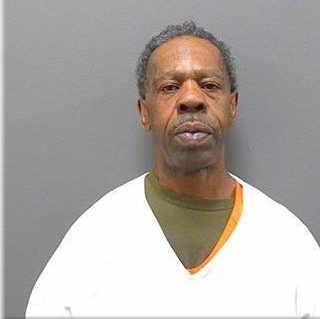US high court decision surprises estate-planning attorneys
By: DOLAN MEDIA NEWSWIRES//September 10, 2014//
US high court decision surprises estate-planning attorneys
By: DOLAN MEDIA NEWSWIRES//September 10, 2014//
Trust now may be needed to protect inherited IRA
By Deborah Elkins
Dolan Media Newswires
 Estate-planning lawyers are contacting clients about a big change in the law when it comes to protecting retirement funds meant to pass by inheritance.
Estate-planning lawyers are contacting clients about a big change in the law when it comes to protecting retirement funds meant to pass by inheritance.
Until recently, clients who had Individual Retirement Accounts as part of their assets passing at death could count on those retirement funds being protected from creditors during bankruptcy; not only for the IRA owners, but also for those who inherited the IRAs.
But inherited IRAs no longer are protected in bankruptcy, the U.S. Supreme Court said on June 12, in Clark v. Rameker.
IRAs are the largest component among U.S. retirement assets, with $5.68 trillion for the first quarter of 2013, according to a report from the Investment Co. Institute.
Lawyers are telling their clients to take another look at setting up a trust to protect retirement fund assets. In the past, the extra expense and administrative inconvenience may have deterred clients from using a trust for retirement fund assets. Clark has recast that calculation.
No ‘free pass’
Clark involved a joint Chapter 7 bankruptcy filed by a married couple who were trying to shield a $300,000 Individual Retirement Account the wife had inherited from her mother. Although “retirement funds” are protected under 11 U.S.C. § 522, that protection only applies to funds belonging to the original owner, the unanimous court said.
That decision caught many lawyers by surprise.
“It really is an about-face. IRAs have carried really powerful statutory asset protection” that presumably extended to inherited retirement funds, said Virginia Beach, Va. estate-planning lawyer Kenneth Dodl.
Bankruptcy lawyer David Spiro agreed, saying, “IRAs are sort of sacrosanct in bankruptcy. A lot of people thought this case would go the other way.”
But the high court in Clark said the “retirement funds” exemption should not be read to convert the bankruptcy objective of protecting debtors’ basic needs into a “free pass” for a debtor who inherits the funds, the high court said.
“If you have an inherited IRA,” Spiro said, “you can take out any money you want without penalty, and you can’t make ongoing contributions to the IRA. So the IRA doesn’t really operate like a traditional IRA.”
“We often use standalone trusts as a vehicle for owning an IRA or a 401(k),” said Virginia Beach estate-planning lawyer Scott Alperin. “It’s a separate trust vehicle specifically designed to hold retirement funds.”
“People can design a trust to provide access to assets for needs, but protect the assets from creditors,” Dodl said. The standalone trust has to be properly drafted because IRA distribution rules will apply through the trust.
Dodl said that for a client who has a significant amount of IRA assets, a standalone trust will enable a trustee to keep the required minimum distribution in trust. It’s valuable for the client who doesn’t want to dump a large amount of cash in the lap of the beneficiary.
The “prototypical client” for such a trust has a “reasonably large IRA and children known to be irresponsible or in a profession that might give them exposure to lawsuits,” estate-planning lawyer M. Eldridge Blanton III said.
There’s no bright line for deciding to use a trust, Blanton said. An IRA valued at $1 million may clearly need trust protection; an IRA valued at $100,000 may trigger at least a look at the issue.
Today, self-funded plans — IRAs, 401(k)s or 403(b)s — are the primary retirement savings vehicles for most people.
Of workers with pension coverage in 2010, 68 percent had only defined-contributions plans, and only 19 percent had a traditional, defined benefit pension, according to the Boston College Center for Retirement Research. That represents a major shift from 1983, when 62 percent of pension-covered employees had traditional pensions, while 12 percent had only defined-contribution plans.
Estate-planning lawyers say the reasoning in Clark likely will be applied to other kinds of self-funded retirement funds, such as 401(k)s and 403(b) plans.
Alperin said he does not see any “distinguishing factor” that would dictate a different treatment for those additional types of retirement funds.
Legal News
- FBI launches criminal investigation into Key Bridge collapse
- Man charged in slaying after woman’s leg found at Milwaukee-area park
- Minnesota man guilty in fatal stabbing of teen on Wisconsin river, jury finds
- Wisconsin teen sentenced in bonfire explosion that burned at least 17
- Wisconsin man who broke into home, ate victim’s chicken, slept in victim’s bed, receives prison and jail sentences
- Judge refuses to dismiss Hunter Biden’s gun case
- House passes reauthorization of key US surveillance program after days of upheaval over changes
- Milwaukee Police officer traveling to Georgia training retires before facing discipline
- Evers to ask legislature to approve largest increase in state support for UW System in two decades
- 7th Circuit Court of Appeals proposes new rules
- Federal agencies allege toxic work environment for women in new report
- Wisconsin man sentenced for sex trafficking a woman and a minor online
WLJ People
- Power 30 Personal Injury Attorneys – Russell Nicolet
- Power 30 Personal Injury Attorneys – Benjamin Nicolet
- Power 30 Personal Injury Attorneys – Dustin T. Woehl
- Power 30 Personal Injury Attorneys – Katherine Metzger
- Power 30 Personal Injury Attorneys – Joseph Ryan
- Power 30 Personal Injury Attorneys – James M. Ryan
- Power 30 Personal Injury Attorneys – Dana Wachs
- Power 30 Personal Injury Attorneys – Mark L. Thomsen
- Power 30 Personal Injury Attorneys – Matthew Lein
- Power 30 Personal Injury Attorneys – Jeffrey A. Pitman
- Power 30 Personal Injury Attorneys – William Pemberton
- Power 30 Personal Injury Attorneys – Howard S. Sicula











